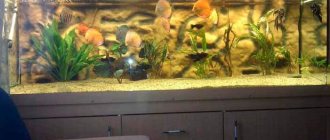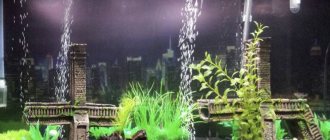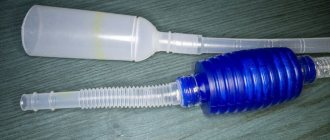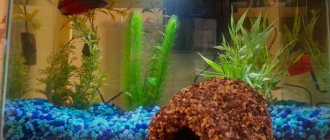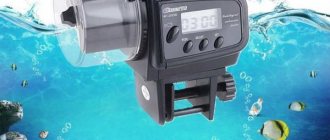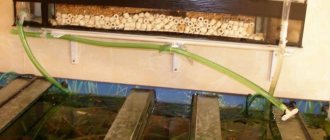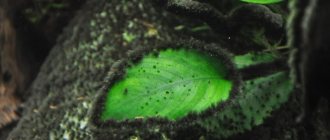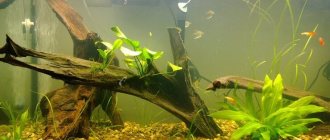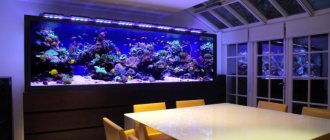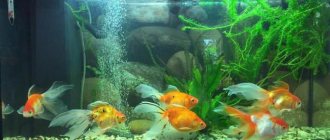Introducing fish in the house does not require much hassle. They do not take up much space and do not need to be walked every morning and evening. There are many varieties of interesting aquarium fish on the modern market.
In this article we will talk about how to make a lid for an aquarium with your own hands and what types there are.
Choosing an aquarium
When choosing an aquarium, it is better to choose a high-quality, spacious and beautiful box. Creative fish owners love to breed unusual breeds and decorate their houses with different plants, algae and special toys. But in addition to its beautiful appearance, the aquarium should be no less convenient and functional.
You can't always find exactly what you need in stores. The aquarium can be of any shape. Starting from the classic round, ending with unusual square and polygonal ones.
Ready-made lids have little ability to ensure a good life for the fish. Very often, such covers are divided into parts, which does not bring convenience to the owners. Therefore, many people are thinking about creating their own lid.
But making a lid yourself can cause some difficulties. On the Internet you can see photos of aquarium covers made by yourself.
Ready-made options
Of the ready-made structures, we recommend the one known in Russia. It offers customers a variety of options - rectangular and panoramic aquariums. Available in small ones - 40x25 cm, and designed for a large tank - 120x40 cm, and rare 100x40 cm. There is almost any lid for a panoramic aquarium - from 50x30 to 120x40 cm. Color is not only black or gray, but also in the tone of oak, walnut, alder and others.
produces simple, inexpensive designs with a five-year warranty. engages in custom-made lid manufacturing, creating designs of any complexity.
Why do you need an aquarium cover?
Aquarium covers contain many functions.
They help maintain cleanliness and limit the appearance of dust and other elements. Read here - DIY dog bed: types, choice of model, materials, step-by-step manufacturing instructions. 120 photos of the best homemade options + master class with a pattern
With their help, water evaporates less, and the release of useful substances occurs in a stable manner. If this regime is disrupted, it may affect the life of the fish.
The cover is needed to attach additional equipment:
- lighting
- various filters and air regulators.
The presence of a lid will provide strong protection so that the fish do not fall out of the house. There are very active and jumping fish, and there have even been cases of such death due to the negligence of the owners.
Making an aquarium lid with your own hands will ensure maximum safety for your fish.
Purpose
Aquarium lids serve not only as decorative items. They perform a number of useful functions, without which it is difficult to provide underwater inhabitants with the necessary conditions:
- Significantly reduce the rate of liquid evaporation. The period between top-ups increases.
- They serve as a reliable protective barrier against foreign objects entering the tank.
- Protects against pets, especially curious cat paws. Relevant for houses where parrots, cats, and dogs are kept.
- They are supplemented with the necessary elements, including lighting fixtures, accessories for a filter and an aerator.
- They prevent fish from accidentally jumping out of the aquarium, keeping them alive.
- Allows you to maintain the desired temperature.
Thus, the lid helps maintain the established balance of the ecosystem and increases the safety of the inhabitants of the aquarium.
Illuminated cover
Making a backlit lid for an aquarium with your own hands is not difficult, but it requires some physical effort.
First you need to purchase the necessary equipment for the job. You can use cardboard. But it is not recommended because it does not have the necessary properties to cooperate with water.This cover is suitable for a short period of time. It is better to use plastic material with a size of 4 mm or more. It is famous for its excellent strength and has good contact with water.
You will also need:
- special glue
- knife
- gloves
First, measure your aquarium using a ruler. It is very important to remove unnecessary fat from all material. This can be done with gasoline or thinner. When all the fragments are cut, they will need to be connected.
Do-it-yourself sewing machine repair: rules for operating a sewing machine. Problems with sewing machines and step-by-step instructions on how to fix them yourselfDIY sewing machine: primitive models and tips on how to build a machine (100 photos and videos)
How to make a crossbow with your own hands: step-by-step description of making small arms (video + 95 photos)
Next, you will need to make a corner that will combine all the elements into one. When everything is connected, the structure must be secured with sealant. Take care of the necessary sections for pouring food into the aquarium.
After the lid is made, start making the backlight. This process must be approached with utmost care. You need to use ready-made tables and electrical diagrams for the backlight to work properly.
You need to attach a little plastic to the inside of the lid. Make sure that the height of the lamp is safe and does not come into contact with water.Creative materials
You can make a homemade aquarium lid from a variety of materials. They have their strengths and weaknesses, but one fact is indisputable: all materials are easy to find in regular hardware stores.
On aquarium forums there are completely different manufacturing schemes. What do they prefer to construct homemade lids from? Most often they resort to using: plastic, laminate, foamed PVC, plexiglass and plywood.
Plastic
It was already mentioned above that it is from it that the bulk of the caps that can be found on the shelves of pet stores are made. Aquarists skillfully construct lids from various types of it, from materials for advertising structures to wall panels. It is important to consider the strengths and weaknesses of the material if you choose it.
The advantages include low price and ease of processing. In addition, plastic lids can be made for aquariums of different shapes and sizes, and with a careful and high-quality approach to work, they look quite aesthetically pleasing, without spoiling the appearance of the aquarium and not much inferior to their factory counterparts. The surface of the material allows you to cover the lid with self-adhesive film and change the design of the aquarium whenever you want.
The weak side of the plastic cover is the presence of seams. Plastic panels are glued together with a special adhesive or superglue, but the sealant, alas, does not adhere to them. Over time, the seams still begin to let moisture through.
Laminate
Lids made of chipboard or laminate are rarely used for aquariums.
Its main advantage is ease of assembly. True, provided that the pieces are already adjusted to the size of the aquarium. Assembling the finished “constructor set” by covering the lid with edging tape is not difficult.
This type of lid has more disadvantages than a plastic one. The most important one is weight. The material itself is quite heavy, and if the aquarium is large (say, 150-200 liters), you can imagine how heavy the lid will be. After all, you will regularly have to remove it and put it back when cleaning and cleaning the aquarium. In the worst case, you may not be able to hold the structure and damage the container.
In the manufacture of such a lid, metal fittings are used. Obviously, the risk of rust is very high. In order for the structure to serve for a long time, the metal elements will have to be changed and lubricated, and this is also unnecessary trouble.
An important point is the quality of the material. If you choose a low-grade one, the lid will last a very, very short time. Even if you install excellent ventilation. And regarding the aesthetic side: it is no longer possible to change the color of the lid. Of course, you can try covering the laminate with film, but such an experiment will clearly not improve the appearance of the aquarium.
PVC
PVC is one of the most popular materials for making lids today.
According to many aquarists, it has enough advantages. Foamed PVC is lightweight, but at the same time quite durable and rigid. It is not afraid of water and is easy to process. The parts are glued together with a special adhesive, which is sold in many building materials stores.
In addition, PVC sheets are white and can be easily painted, as well as finished with various materials, including film. If you really want to, you can actually find colored PVC.
The disadvantages of opponents of PVC include relative fragility, fading and the question of the toxicity of this material.
Plexiglas
This material, unlike ordinary glass, is lighter, and the plexiglass lid will not be troublesome during cleaning. The plexiglass product is transparent, which means it will not become an unnecessary stain in the interior. But it is quite difficult to process, so its use is used quite rarely.
Plywood
Not the best option for an aquarium lid. A plywood product is susceptible to moisture very quickly. From which it follows that as a result the plywood cover will dry out and become unusable. So is it worth spending time and effort on making it?
It’s up to you to decide what material to use to construct the lid for your home water kingdom. Whether it is PVC, sheets of plexiglass or several wall panels, you should start making an aquarium cover only when you are firmly confident in your strengths and abilities.
The manufacture of this design requires not only accuracy and diligence, but also the presence of certain skills. Ignorance of the rules for working with materials and, as a result, an incorrectly assembled lid can cause significant harm to the inhabitants of the aquarium. The desire to save can result in greater costs. Therefore, if you have doubts or fear that the appearance of the product will spoil the interior and harm your pets, it is better to go to a pet store and purchase a ready-made cover.
CO2 FOR AQUARIUM AND EVERYTHING YOU NEED TO KNOW ABOUT IT.
TYPES OF AQUARIUMS - EVERYTHING FOR AQUARIUMISTS.
AQUARIUM CLEANING FOR BEGINNERS.
Panel cover
Do-it-yourself panel aquarium covers are extremely popular. The panels are very easy to use and lightweight. They are reasonably priced and are suitable if you want to save on your budget.
Experts do not recommend using glue containing dichloroethane and acetone for gluing elements. They emit harmful substances that are hazardous to health. It is best to use a silicone base for gluing.
Not all lamps are suitable for this material. Special lighting devices for plastic do not have the most budget price.
Do-it-yourself grain crusher: types, principles of operation and tips on how and what to make an effective crusher from (85 photos)Do-it-yourself ski mount: installation and tips on how to install various types of mounts correctly (115 photos and videos)
How to make a castle with your own hands: building decorative medieval castles and fortresses (110 photos)
When buying regular lamps, you will not be sure of the absolute safety of your fish. It is better not to spare money and buy quality devices.
Manufacturing Features
Making a rectangular aquarium cover is not as difficult a task as creating a cover for a round or panoramic tank, but this does not mean that nothing will work out. Knowing about some of the nuances of calculations and selection of materials, you will probably be able to cope with this task.
Round lid
The main feature of creating a round product is the selection of material, since ordinary thin lining is unlikely to be suitable. Depending on the size of the tank, you can use specially treated chipboard sheets or laminate, although for a small aquarium a cover made of PVC panels is also suitable, you just need to fold several sheets and process them correctly. It is not difficult to fasten them, because you can find a variety of “locks” on sale. By sealing the joints and edges, you will get a product that is no worse than a rectangular one.
Another point that is worth paying attention to when making a round aquarium lid is the stiffening ribs. They can be made from tin pieces or other durable and flexible material.
LED Aquarium Cover
A good lamp will provide the fish with the necessary conditions for life.
DIY LED aquarium covers have a more complete lighting system. They do not have a high level of heat transfer. They also last a very long time and are quite economical.Such caps are still very safe and do not produce harmful substances. But they come at a high price. If you want to make this lid yourself, it is best to use the detailed instructions.
Photo of a do-it-yourself aquarium lid
Help the site, repost 
0
